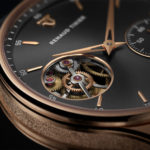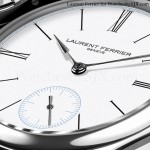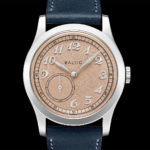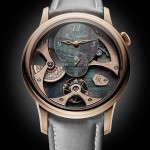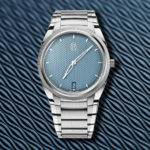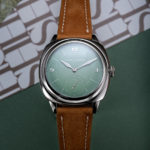Biver Debuts a Most Sophisticated Micro-Rotor Calibre
A simple watch executed elaborately.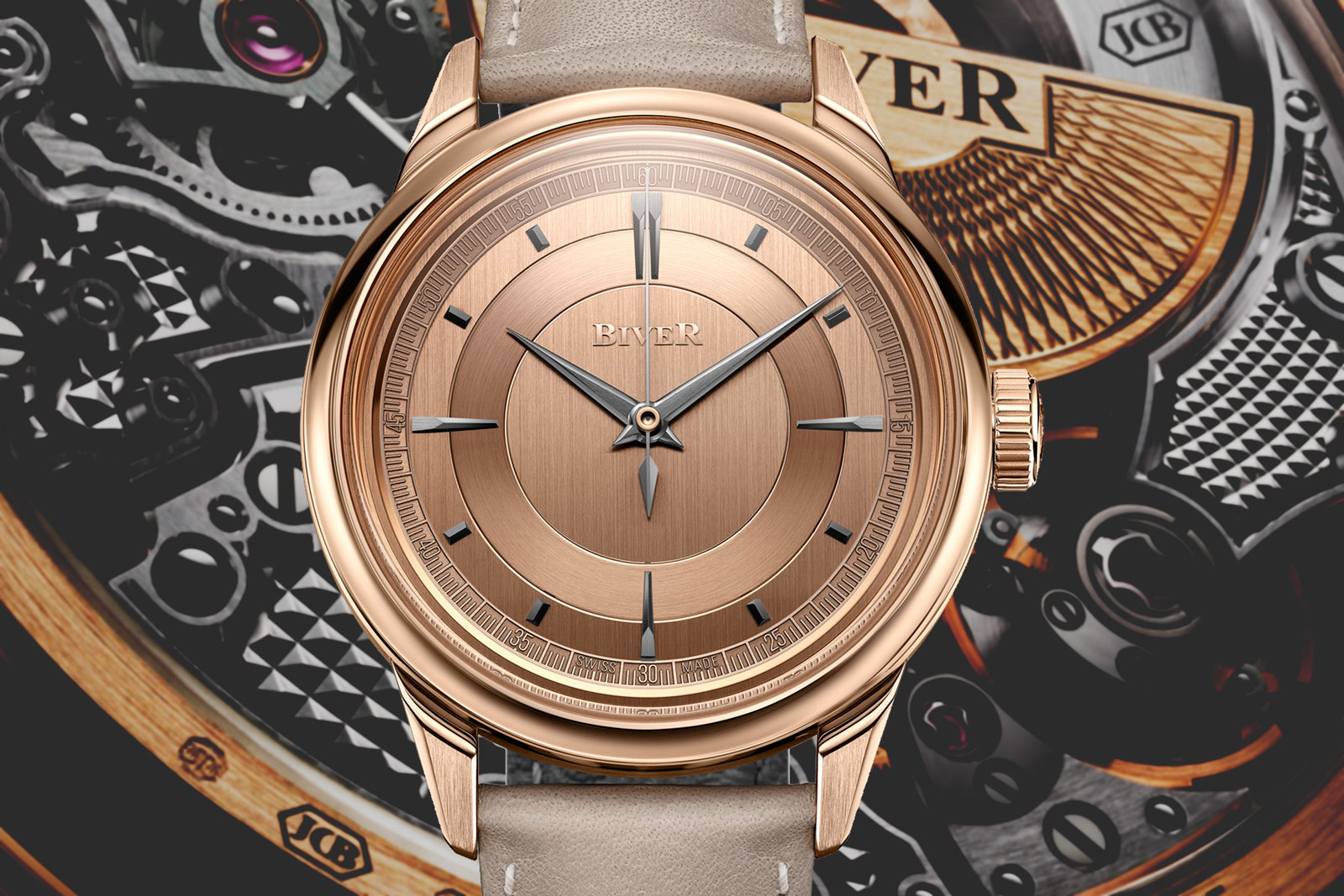
Founded by the namesake father and son duo, Biver has just debuted its second model, the Biver Automatique. Though a simple a time-only watch with central seconds, in contrast to the preceding Carillon Tourbillon, the Automatique is equipped with an elaborately executed movement that’s arguably the most impressive recent automatic.
Besides decorative touches like guilloche on the bridges, the JCB-003 also features details like a grande sonnerie-style winding click. The calibre is paired with a comparably elaborately constructed dial with solid gold appliqués that’s available in a variety of materials, including mineral stone like Pietersite.
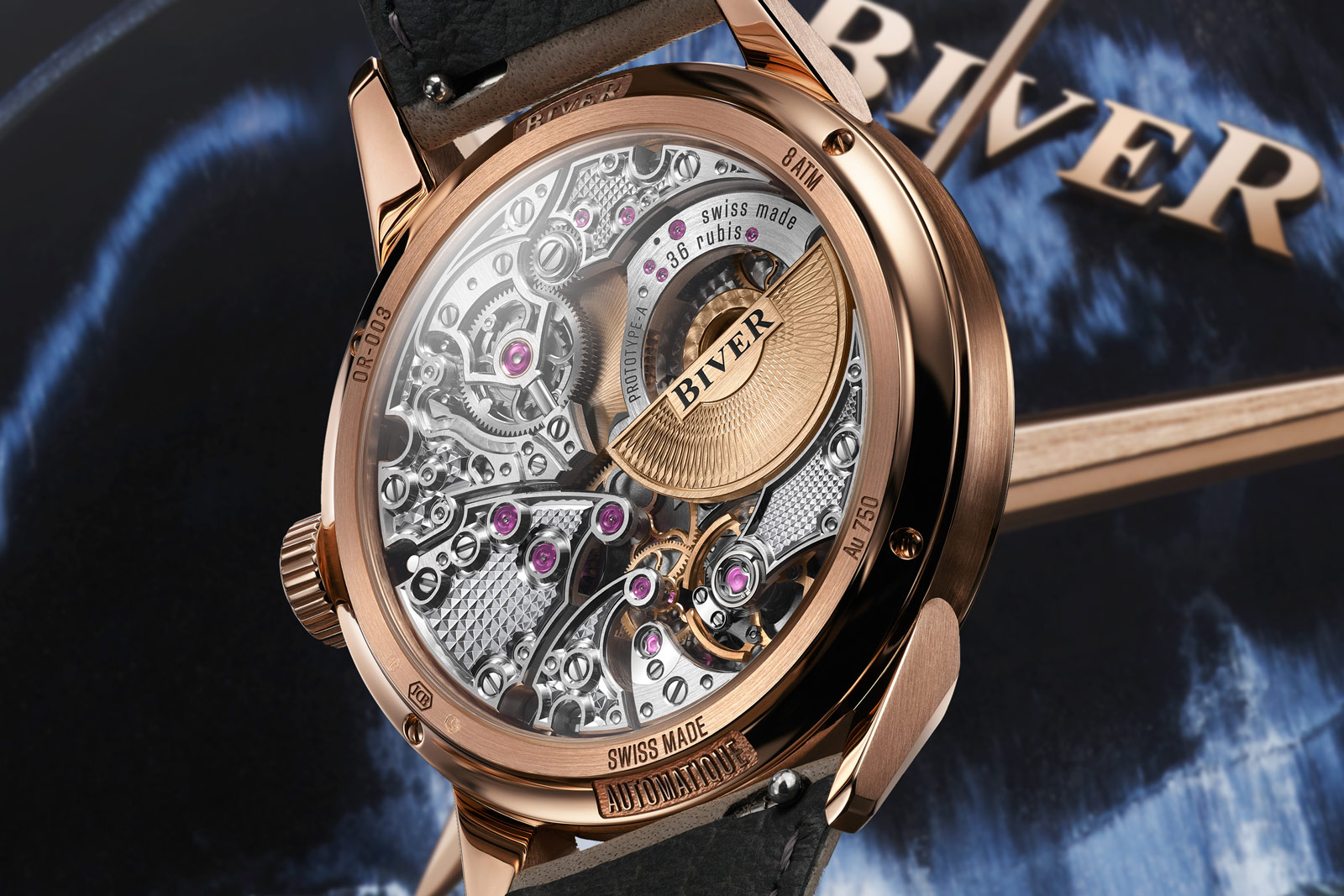
The JCB-003
Initial thoughts
The Automatique is clearly meant to showcase the brand’s ability to create a highly finished and refined time-only watch that can compete with more established producers, both in terms of the movement as well as habillage (namely the dial and case).
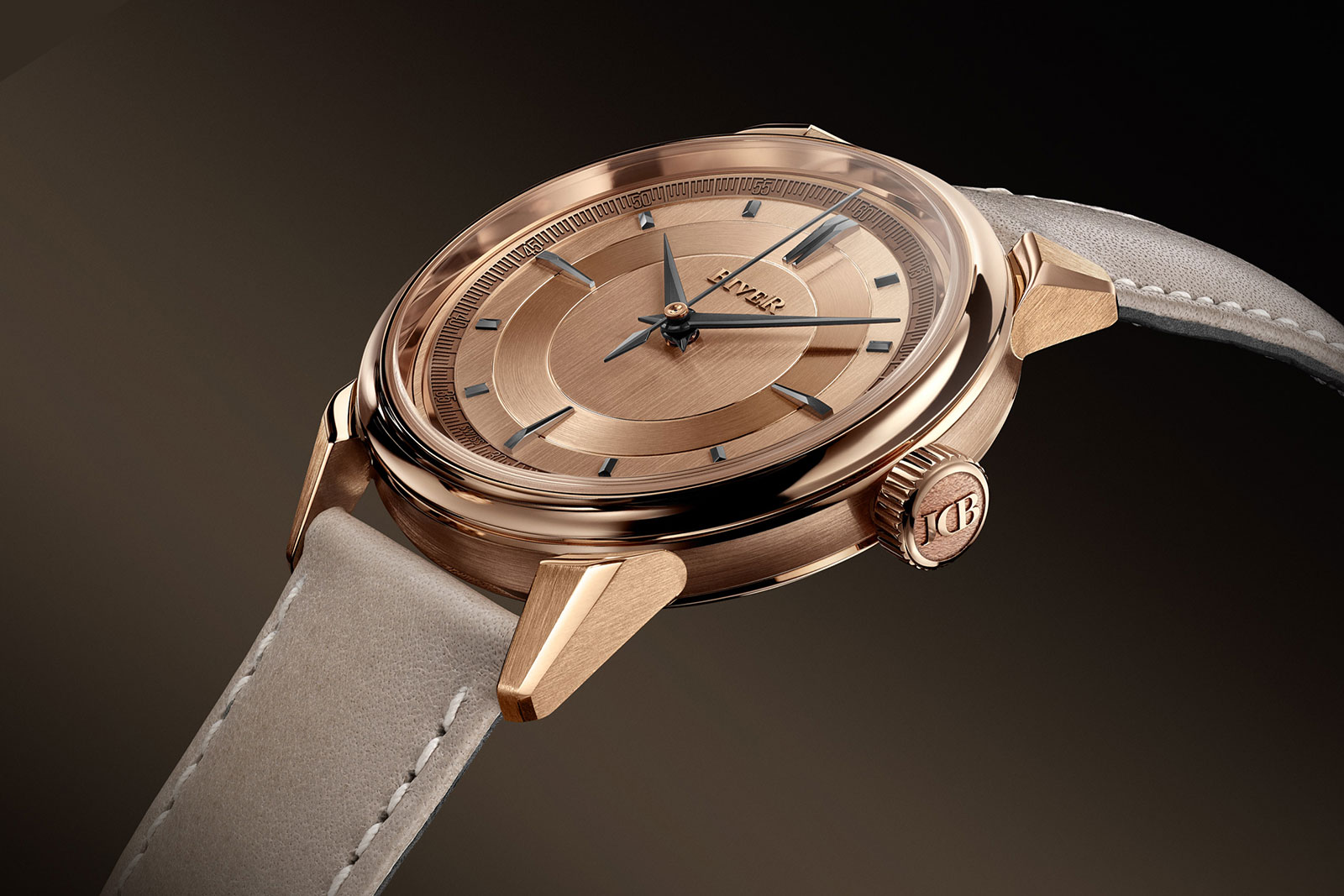
The highlight of the Automatique is the JCB-003 movement. Developed in partnership with movement specialist Dubois Depraz, the JCB-003 is quite possibly the most refined micro rotor movement on the market today. Though it is functionally simple, the movement boasts decorative and technical details along with a high level of finishing.
The over-engineered caliber is meant to serve as a base for future complications, which makes sense considering the high cost involved in constructing such a movement.
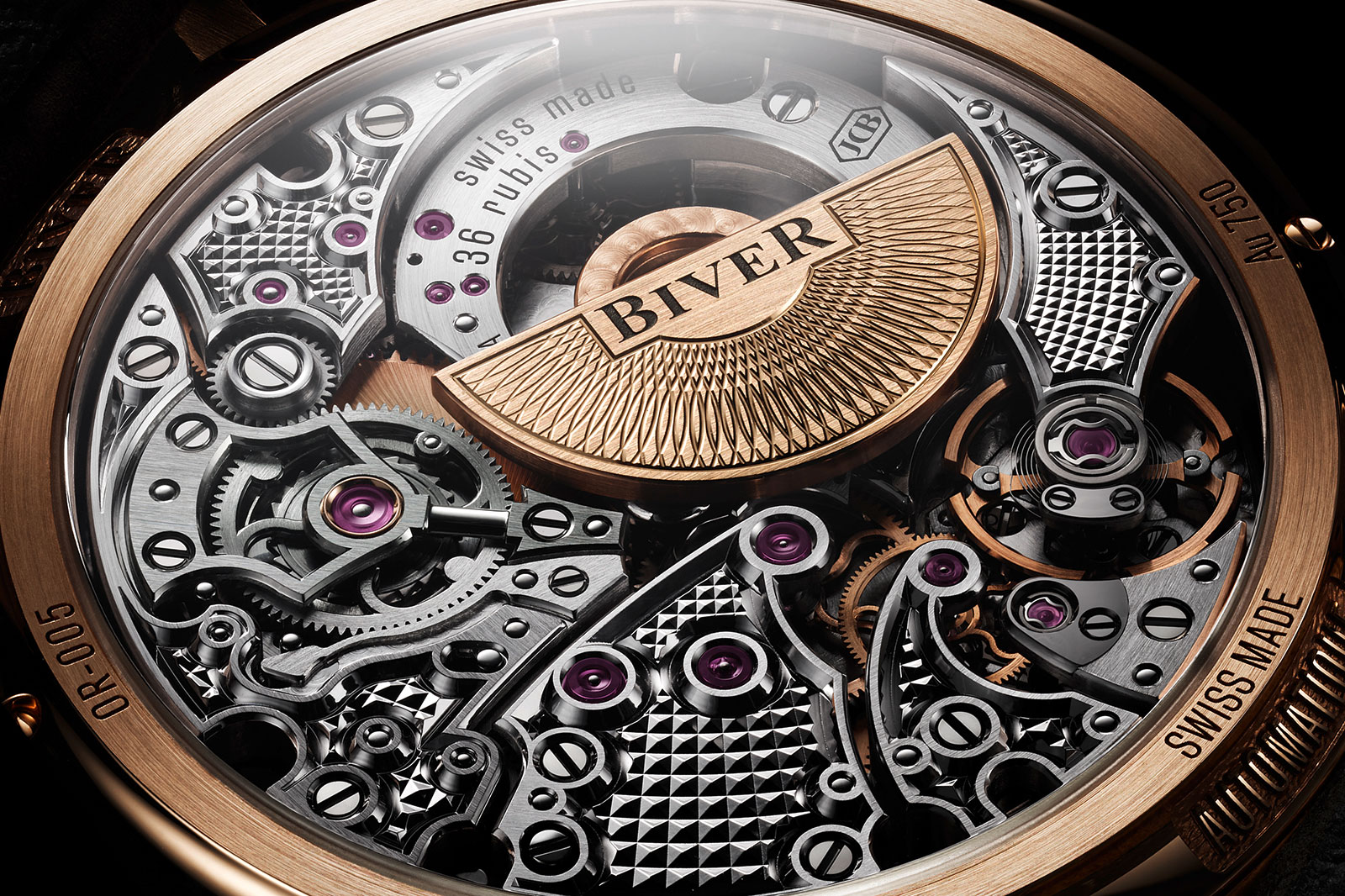
Amongst the calibre’s notable details is the grande sonnerie-style winding click, which is perhaps the first and only time it’s been implement in an automatic movement. Another is the finger bridge holding the escape wheel that not only features a black polished steel cap, but also a shock absorber for the jewel, well over standard practice for both decoration and function.
Decoration wise, the JCB-003 not only employs the requisite anglage, black polishing and graining, but even guilloche. In fact, the JCB-003 is thoroughly decorated, almost to the point of being excessive. Similarly, the aesthetics of the movement are perhaps too elaborate, to the degree that the styling loses cohesiveness, but that can be overlooked since the calibre is impressive in all respects.
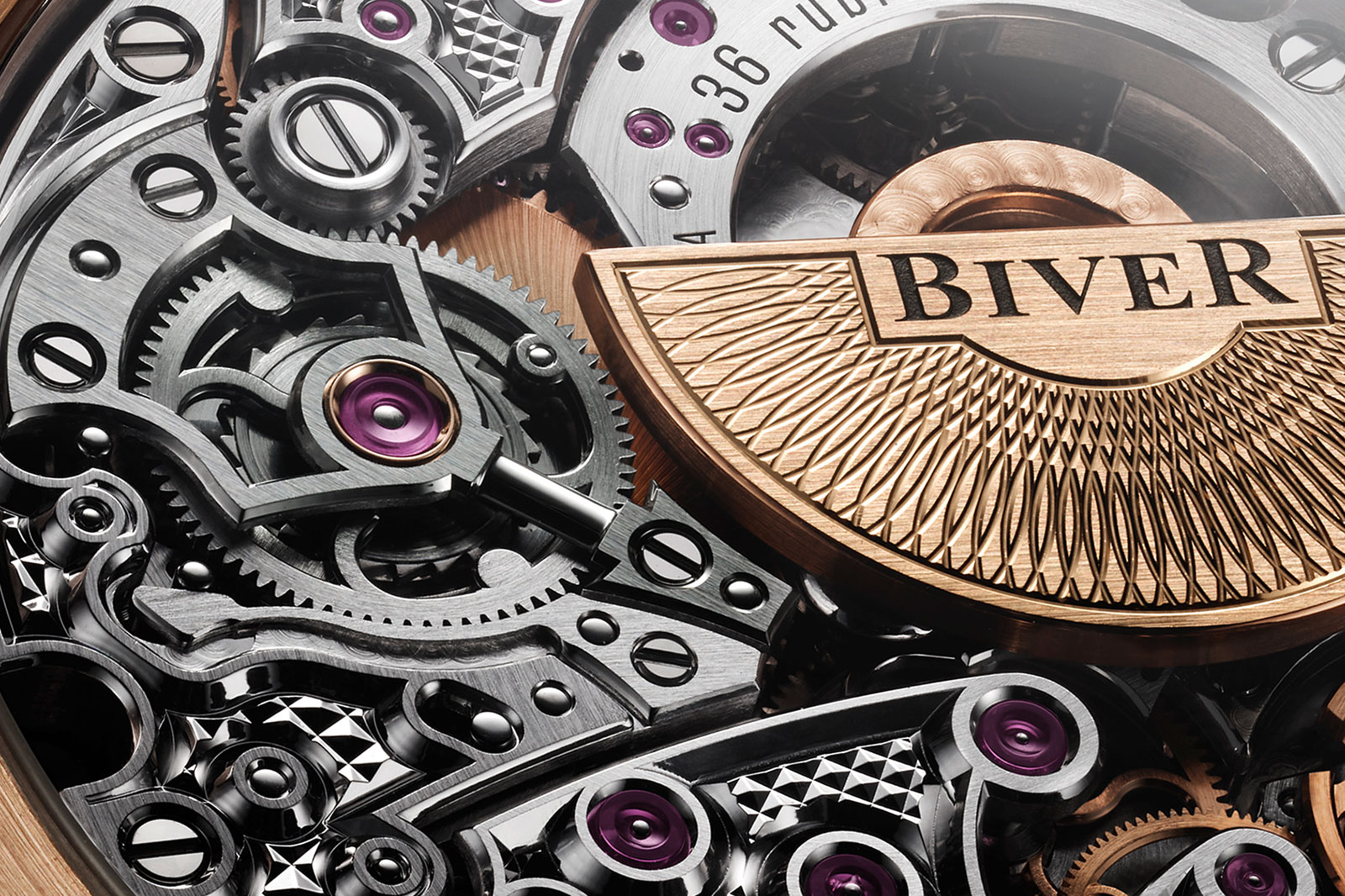
Like the movement, the dial is expensively executed, with practically every element being solid 18k gold. But on the other hand, the aesthetics are more cohesive. Though the Automatique retains the same design cues as the Carillon Tourbillon, the styling works better here because of the thin, compact case and cleaner dial. The case in particular has almost ideal proportions, unlike the Carillon Tourbillon that was just a bit too thick.
The Biver Automatique starts at CHF75,000 before taxes in gold. It is by no means affordable, but the price is competitive in the rarefied segment of high-end time-only watches from independent brands. And it stands out for being automatic, since it sits in a segment where self-winding movements are rare.
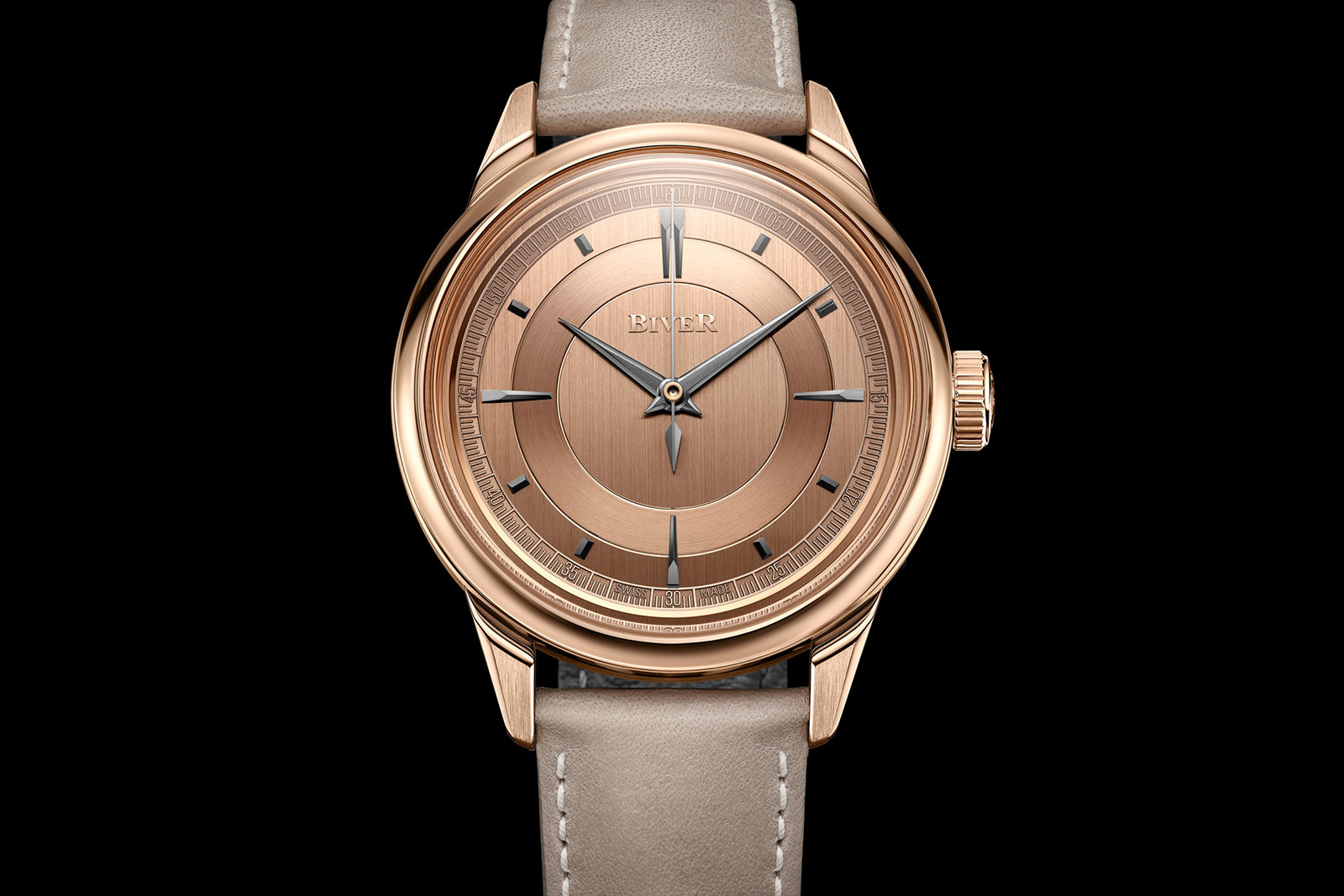
Biver style
The Automatique is presented in the same design language that was first seen on the Carillon Tourbillon. The vintage inspired case sports angled, soldered lugs that bring to mind the Patek Philippe ref. 1579 anse a ragno, or “spider lugs”. The polished, concave bezel accentuates its thinness and highlights the sapphire crystal and dial.
Practically every external element is identical to that on the Carillon Tourbillon, but scaled down. At just 39 mm in diameter and 10 mm in thickness, the Automatique is a properly-sized dress watch – but still water resistant to 80 m. The reworked proportions make the Automatique significantly more elegant and appealing, at least size-wise.

The Pietersite dial
The Automatique is being launched in two formats, “standard” and Atelier Series. Both share the same movement and design, with the difference being the dials.
The standard models sport solid-gold dials that match the case metal. The gold dials are finished with circular and vertical brushing. The outer minute track is raised and angled, and more usually features a minute scale in relief.
The applied indices are in blackened 18k gold, as are the hands, which are finished like a movement component with straight graining on their tops and polished along their edges.
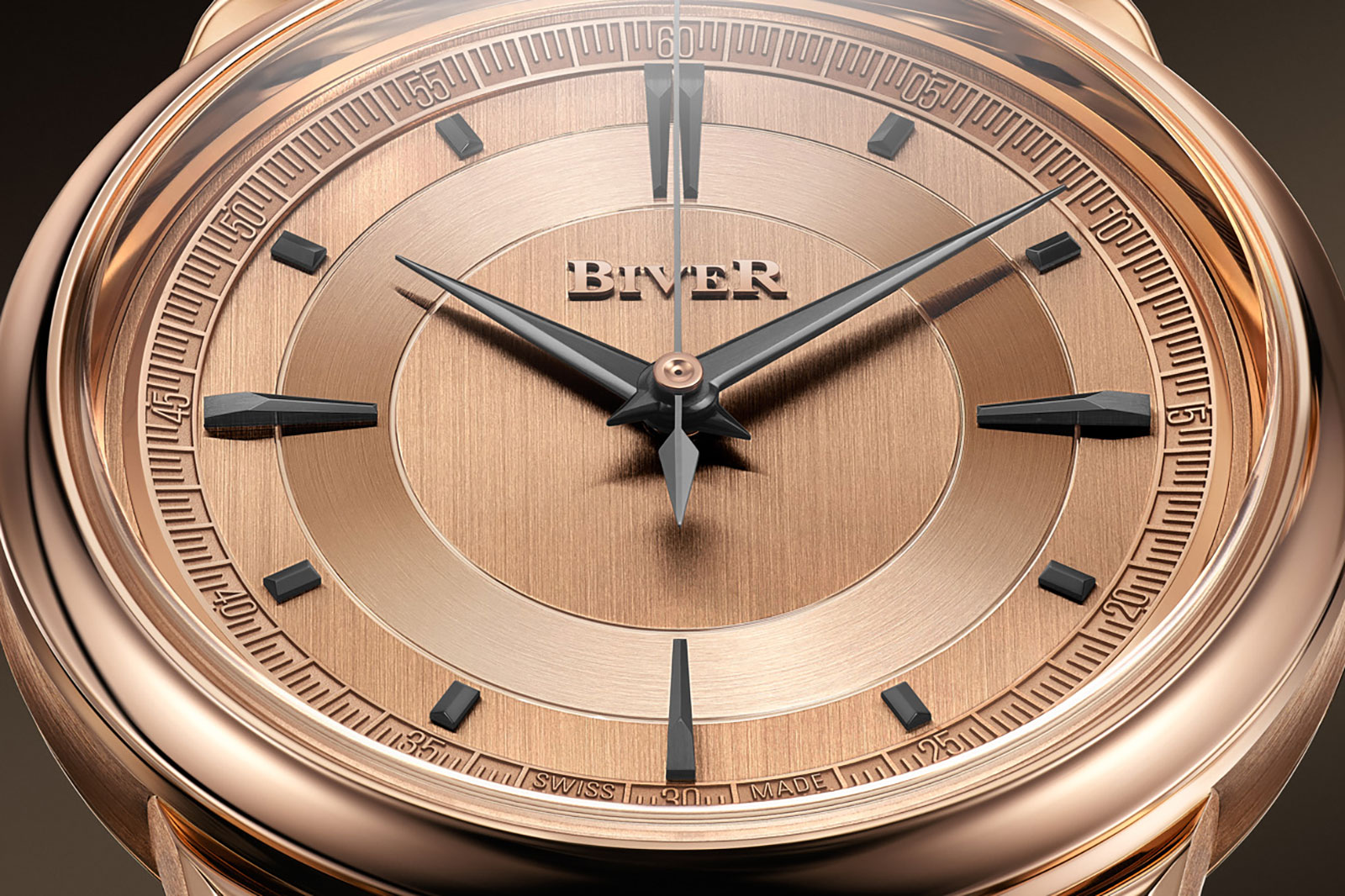
The Atelier Series, on the other hand, will be produced in limited numbers for a fixed period. Watches in the series feature mineral stone dials, either frosted obsidian or Pietersite (otherwise known as chalcedony).
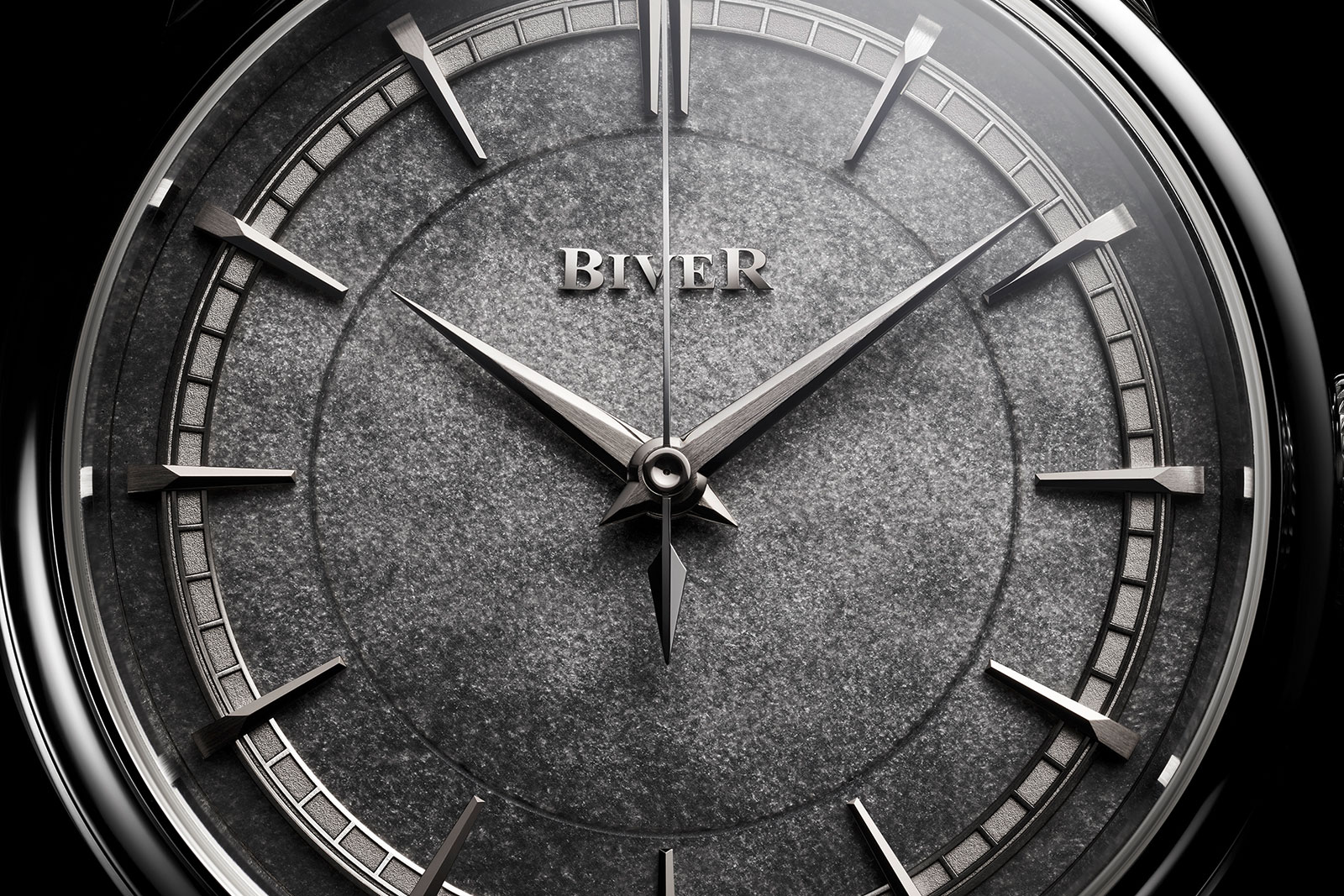
Sandblasted obsidian
The stone dials share the “sector” design found on the gold dials, but with baton indices all around while also doing away with the raised minute track.
Stone dials are typically left smooth due to the difficulty of engraving stone, but both the obsidian and Pietersite dials have an engraved border around the centre of the dial to form the “sector” design, reflecting the attention to detail.
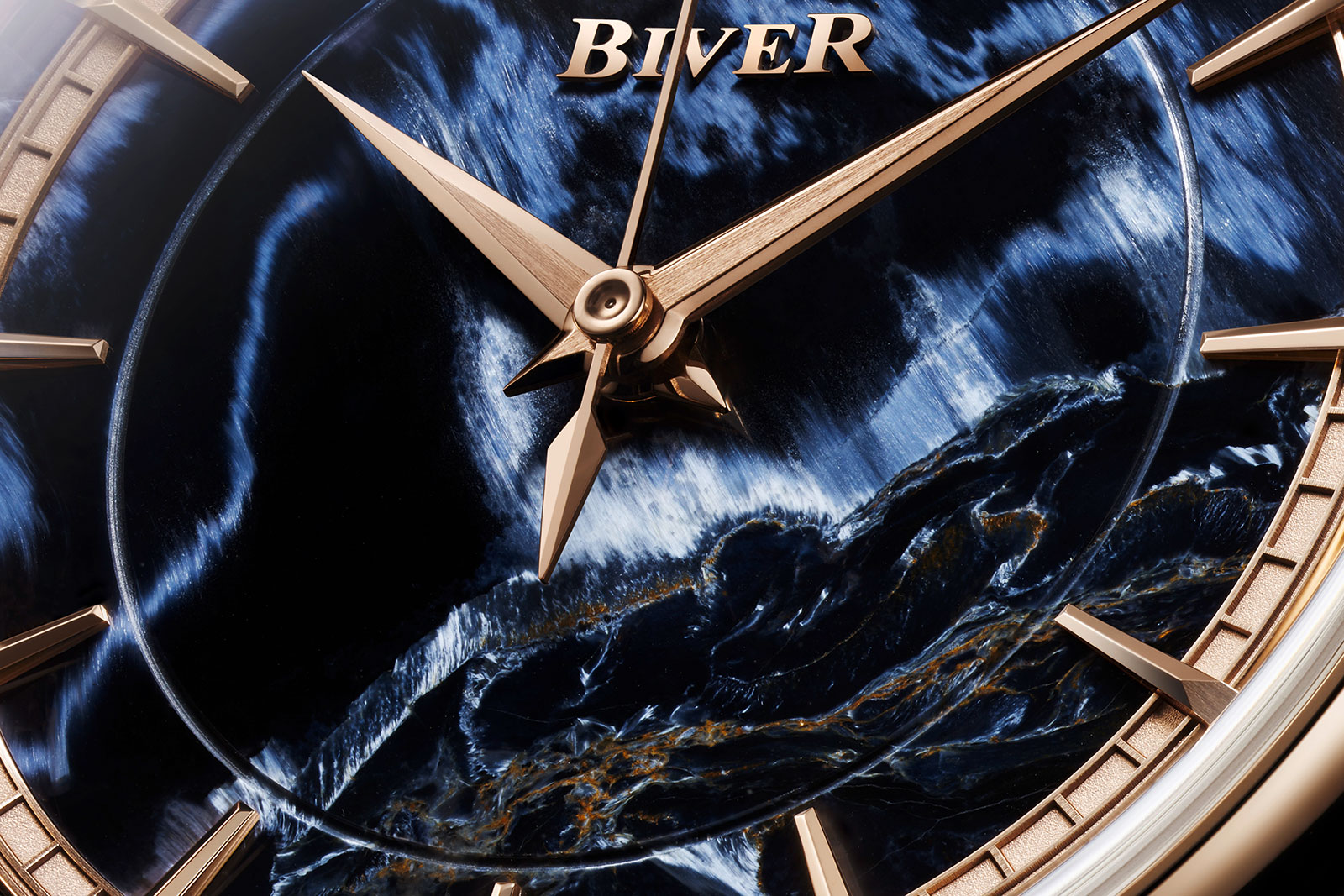
Pietersite
A new calibre
While only being a time-only movement, the JCB-003 is complex in technical terms and layered in aesthetics. The calibre was developed with the help of Dubois Depraz, the outfit best known for its complications modules though the firm has recently started to offer its own series of calibres.
The JCB-003 has hour and minute hands, along with a zero-reset centre seconds. When the crown is pulled to set the time, the seconds hand resets to zero for synchronisation with an external time reference.
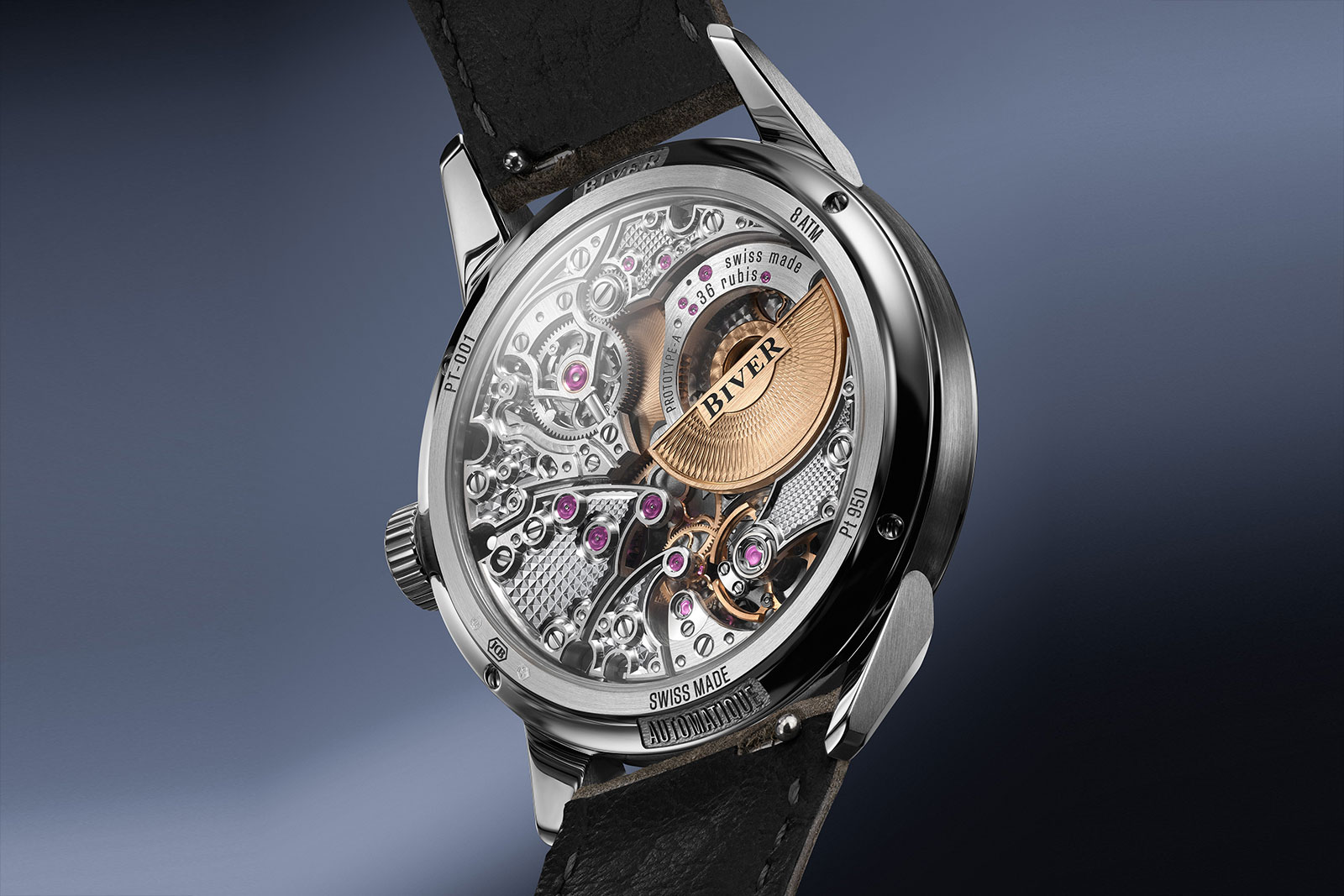
Like many thin automatic movements, the JCB-003 relies on a micro rotor. It’s large, bi-directional, and in 22k gold that’s decorated with guilloché done on a hand-operated machine. Next to the rotor sits the barrel, which is concealed by the large winding works under an open-worked steel bridge – with a tubular arm and gold chaton no less – that reveals the grande sonnerie-style click wheel and ratchet pawls.
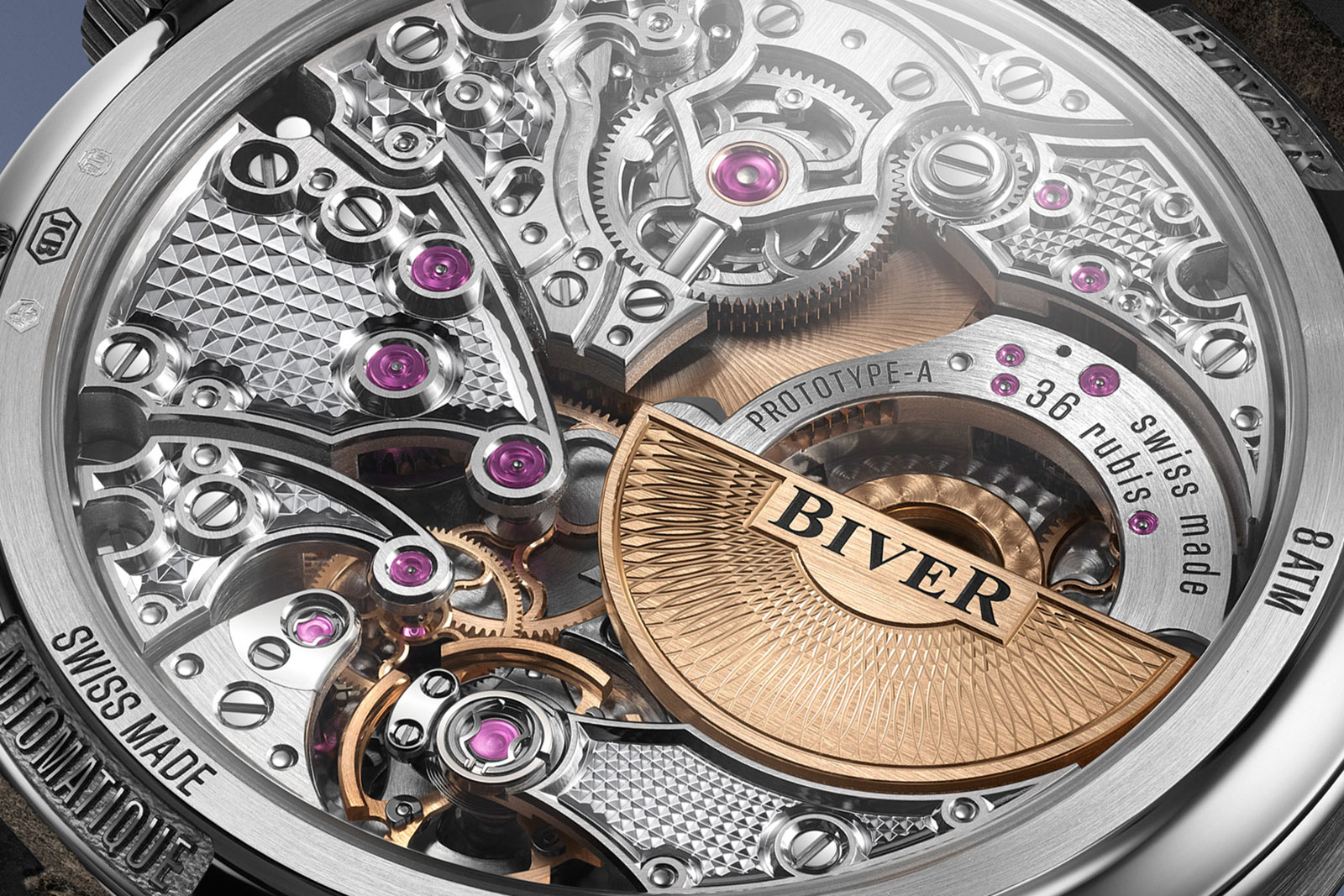
The bridges and balance cock are finished with a deep, clous de Paris guilloche that is also done the old-fashioned way by hand. To frame the guilloche, the bridges have raised borders around their edges that are brushed, while the edges are rounded and polished.
The elaborate nature of the movement goes deeper than the bridges. The wheels in the going train have wave-shaped spokes with beveled edges. The visible steel components are either black polished or straight grained. The barrel cover is solarised while the base plate is finished with perlage.
The JCB-003 runs for 65 hours on a full wind and features a free-sprung balance beating at an uncommon 3.5 Hz, or 25,200 beats per hour, a frequency most often encountered with silicon hairsprings (which this is not).
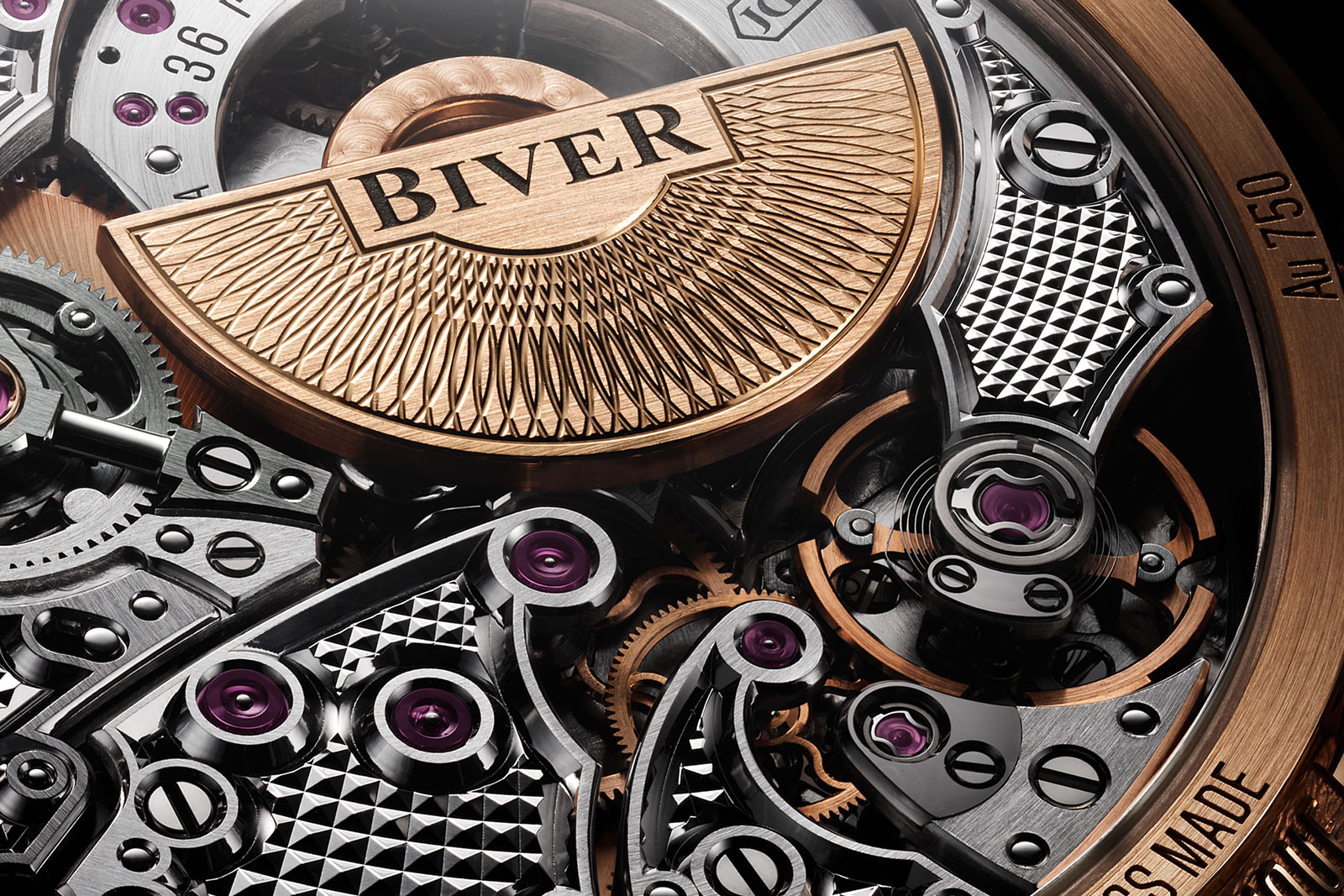
Key facts and price
Biver Automatique
Diameter: 39 mm
Height: 10 mm
Material: Platinum (Pt 950) or 18K rose gold
Crystal: Sapphire
Water resistance: 80 m
Movement: JCB-003
Functions: Hours, minutes, seconds
Winding: Automatic
Frequency: 25,200 beats per hour (3.5 Hz)
Power reserve: 65 hours
Strap: Leather with platinum or rose gold buckle, or five-row Biver bracelet in either platinum or rose gold
Limited edition: No, but limited quantities for the Atelier Series
Availability: At authorised retailers
Price: Starting from CHF75,000 for gold case on strap, up to CHF121,000 for platinum with obsidian dial on bracelet (prices exclude taxes)
For more, visit jcbiver.com.
Back to top.

